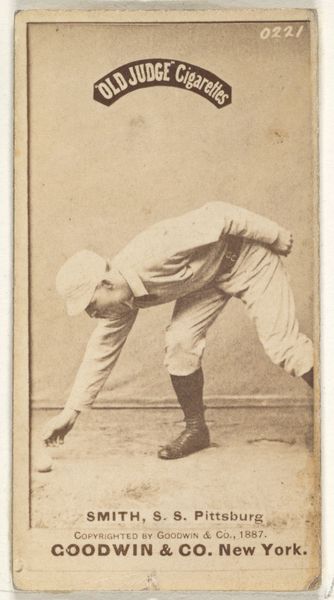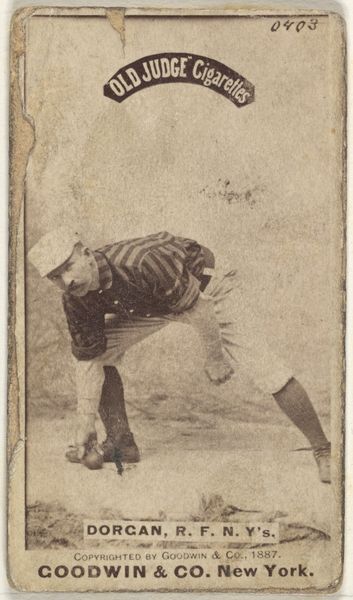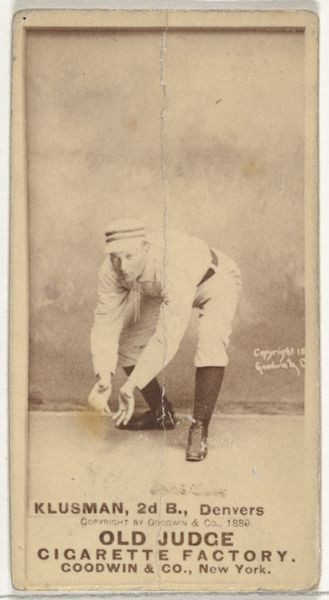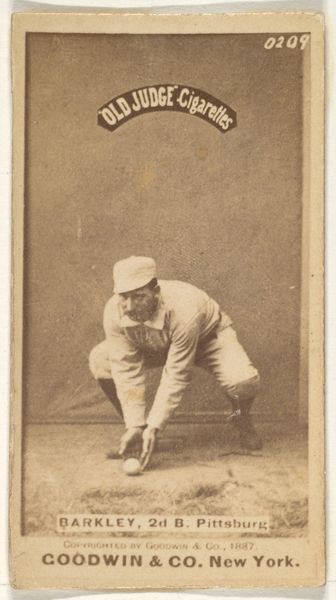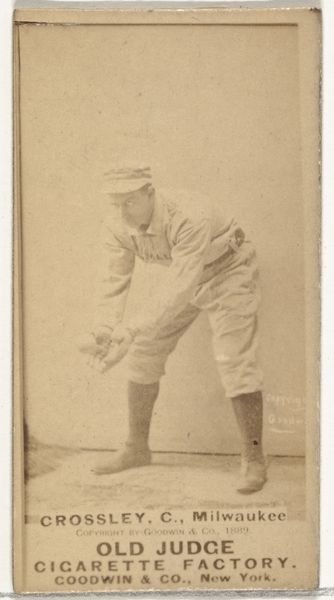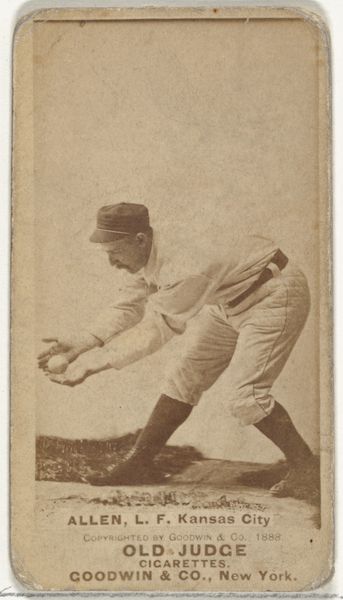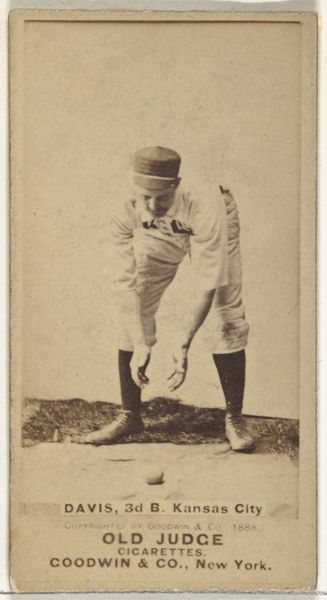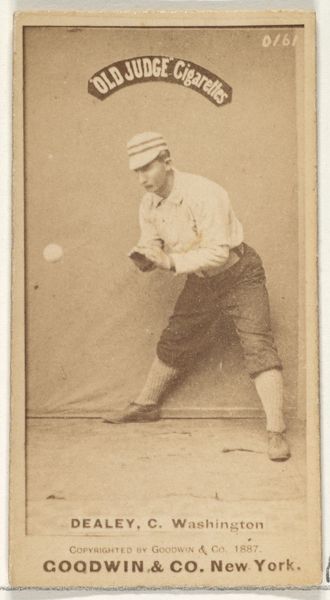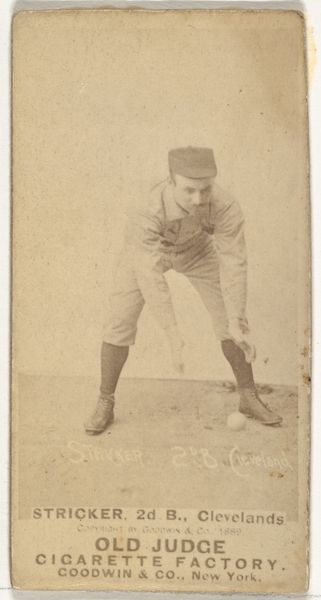
Philip Sydney "Red" Ehret, Pitcher, Louisville Colonels, from the Old Judge series (N172) for Old Judge Cigarettes 1887 - 1890
0:00
0:00
drawing, print
#
portrait
#
pencil drawn
#
photo of handprinted image
#
drawing
#
toned paper
#
light pencil work
#
wedding photograph
#
photo restoration
# print
#
old engraving style
#
baseball
#
coloured pencil
#
men
#
watercolour illustration
#
athlete
#
watercolor
Dimensions: sheet: 2 11/16 x 1 3/8 in. (6.9 x 3.5 cm)
Copyright: Public Domain
Editor: Here we have a portrait of Philip Sydney "Red" Ehret, a baseball pitcher for the Louisville Colonels, created between 1887 and 1890 by Goodwin & Company. It's a print, part of the "Old Judge" series, seemingly an advertisement for cigarettes. What stands out to me is how the athlete’s image is essentially being used as a commodity to sell something entirely unrelated to baseball. What do you think about that? Curator: Precisely! Consider the means of production here. It’s not just a portrait; it's a mass-produced print designed for widespread consumption alongside a tobacco product. The labor involved is also worth considering - the photographers, the printers, the workers in the cigarette factory – all contributing to this layered process of image making and commercial distribution. We might even see parallels with today's athlete endorsements. Do you see a distinction here? Editor: I do, somewhat. Modern endorsements often involve direct contracts and agreements, which probably suggests that the athletes benefitted more directly than they may have back then. Were these baseball players likely compensated fairly, if at all, for the use of their images? Curator: That's an excellent question. The ethics surrounding image rights were far less defined than today. Examining archival evidence – ledgers, contracts if they exist – might reveal the financial arrangements. Even the materials tell a story – cheap paper, mass production, intended for disposal – it’s a transient form of image-making. Think about how the ephemerality impacts its artistic value. Is it "high art" or just a fleeting commodity? Editor: I suppose at the time it may have been viewed solely as promotional material. But now, in a museum, its status has shifted. We are analyzing the context of labor and consumerism, instead of the baseball player’s pose or expression. The conversation shifts entirely, right? Curator: Exactly. The framing changes. We are acknowledging the social and economic structures inherent in the image's creation and distribution. Today we aren’t only viewing an individual; we're seeing the marks of the late 19th century's evolving consumer culture and manufacturing processes. Editor: That definitely gives me a new perspective to appreciate its multiple layers of context. Thank you!
Comments
No comments
Be the first to comment and join the conversation on the ultimate creative platform.
